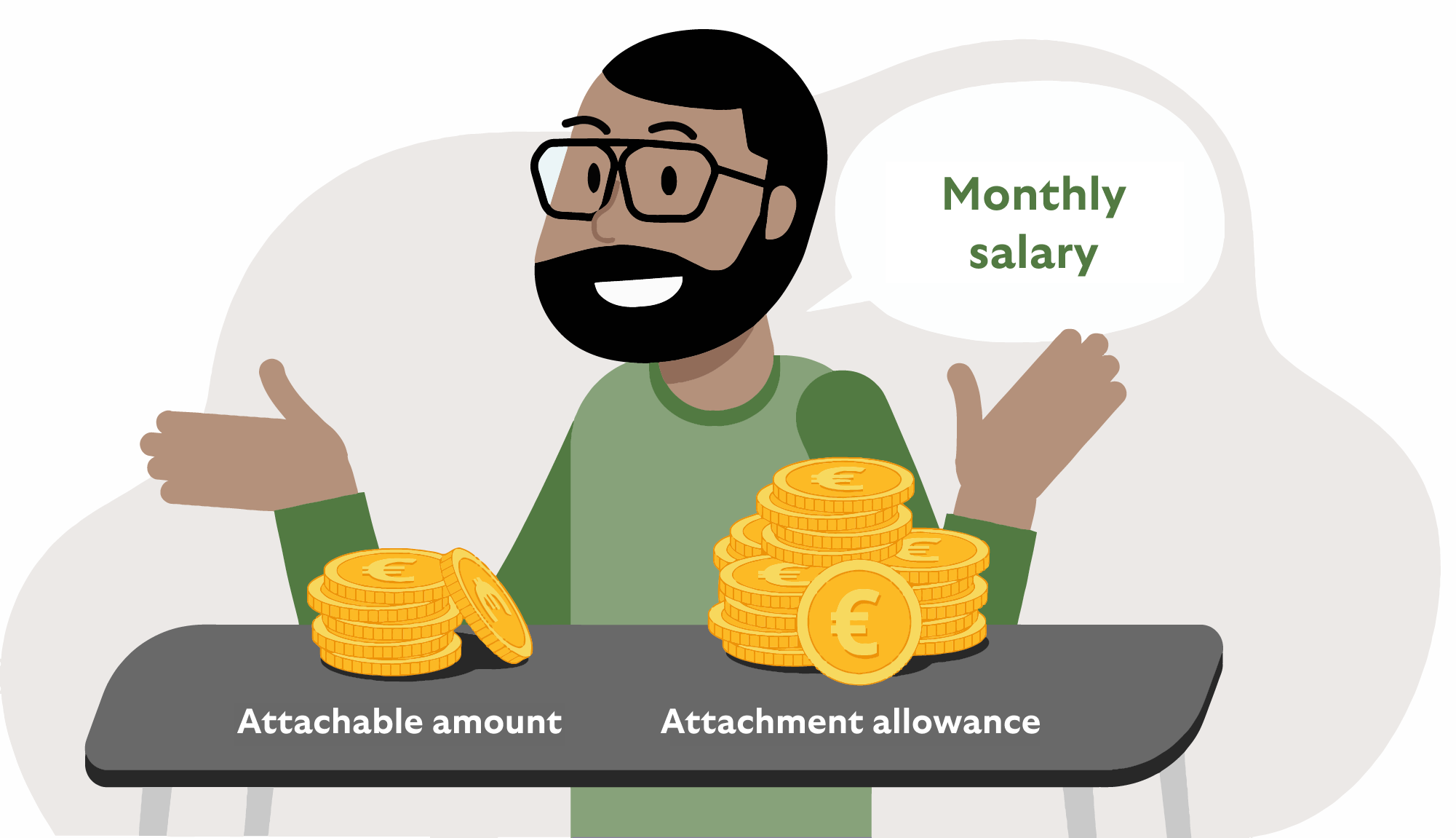What is the attachment allowance?
People who are affected by an attachment need a financial basis to be able to continue paying for their home and food. That is why the law provides for an attachment exemption limit or an attachment allowance. This monthly amount of money is unseizable - that means, it may not be garnished.
Find out here what the attachment allowance is and how high it is.

The most important questions at a glance
What is the attachment allowance?
If a debtor does not pay his debts and - in extreme cases - is affected by an attachment, the state ensures that he still has enough money to live on at all times. This is what the attachment allowance is for.
The attachment allowance represents an unseizable sum of money which the debtor, e.g. in the case of a wage or salary attachment, is left with in any case for everyday living expenses. The debtor should also be able to meet possible maintenance obligations (e.g. for children) in this way. The attachment allowances are binding. Only the part above this limit may be garnished.
The attachment allowance is a protected sum.

Adaptation of the attachment allowance
The attachment exemption limits are adjusted every two years to the changed cost of living and income development.
Legal basis
How and where are the attachment allowances regulated?
The attachment exemption limits are set in § 850c of the Code of Civil Procedure (ZPO). How high the attachment exemption limit is for a certain net income can be seen in the public attachment table of the current year. The current attachment table of July 2021 can be viewed here: https://www.buzer.de/gesetz/14637/index.htm
The table shows which attachment exemption limit applies for a certain monthly income. The attachment allowance is calculated in such a way that the money is sufficient to cover current living expenses - for example, the costs of electricity and rent, food or tickets.
Specifics
How much is the attachment allowance?
The attachment allowance to which a debtor is entitled by law can vary greatly depending on his or her life situation.
The amount of the attachment exemption limit depends on two factors:
- What is the debtor's adjusted net income?
- How many persons is the debtor legally obliged to maintain?
What does net income mean?
The net income is the income minus taxes and social security contributions. In addition, unattachable salary components, such as hazard pay or expenses, have been deducted from the "adjusted" net income. Debtor advisory offices and lawyers can provide more detailed advice on this if necessary. A married debtor with children can therefore be entitled to higher allowances for the same income than a single person without children.
How much is the allowance for bankruptcy?
Insolvent persons are also entitled to a fixed monthly amount for living expenses. The exemption limit therefore also applies to private insolvency. This not only ensures the personal subsistence level - debtors should also continue to be able to meet their maintenance obligations during bankruptcy.
Basically, the amount of the attachment allowance depends on the adjusted net income and possible maintenance obligations.
A look at the current attachment table provides a good estimate of the expected attachment allowance.
Conclusion
The attachment allowance is a legal regulation that protects a person in debt. Even if a part of the income may be seized during a compulsory execution, a debtor must always be left with a minimum amount with which he or she can cover his or her daily expenses.
However, the attachment allowance only ensures living at the minimum level - therefore, one should do everything to prevent it from getting to that.
Identity
Please understand that for reasons of readability we only use the grammatically masculine form when referring to persons. This always refers to people of any gender identity.



